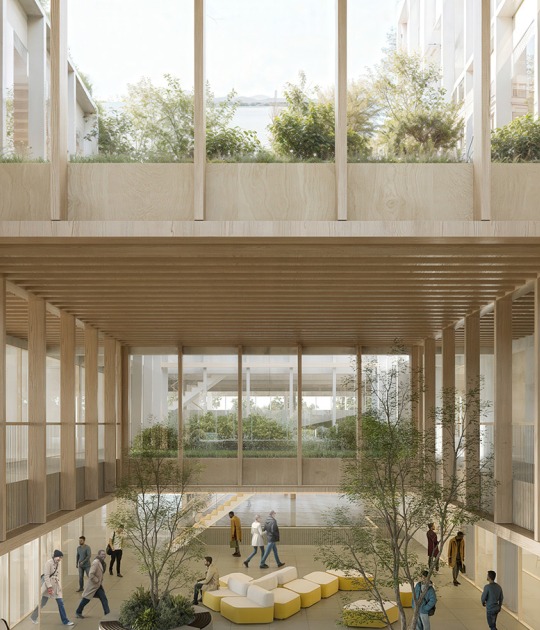In the video, of nearly half an hour, compares the value of the proposal by ZHA with the legendary stadium by Kenzo Tange and the Japanese culture. Among the points where more emphasis makes Zaha Hadid Architects are .-
- Its design means less volumetric impact than other designs, because is compact, and efficient energy.
- The shape of design locates more viewers, with the best views, into the central part.
- The deadline for completion of the execution will be in 2019, prior to the event in 2020.
- That its budget will be lower (in comparation with 2012 London Stadium that was ¥218 billion, according to the firm, Tokyo stadium will cost "only" ¥258 billion), while adds a critical vision about London Stadium, because it needed expensive reforms. Further argues that the cost of the project is not dependent on the design, and only dependent of Japanese construction market.
- And surprising argumentation of women, "Japan's future generations of athletes, sportsmen and women."
Zaha Hadid Architects welcomes a new bidding process for the New National Stadium in order to reduce costs and ensure value for money in terms of quality, durability and long-term sustainability. This video presentation and report outlines in detail the unique design for the New National Stadium which has been thoughtfully developed over two years to be the most compact and efficient stadium for this very special location in Tokyo.
Designed by Zaha Hadid Architects and our Japanese partners, the New National Stadium contains all the knowledge and expertise gained from the team’s direct experience of other Olympic, World Cup and World Championship stadia. The substantial investment in time, effort and resources already made by the Government and people of Japan into the existing team over the past two years ensures the New National Stadium can be completed in time to welcome the world to Japan in 2019 ahead of the Tokyo 2020 Olympic and Paralympic Games, and become a new home for sport for many future generations of Japan’s athletes, sportsmen and women.





























